Planet formation captured in photo
- Published
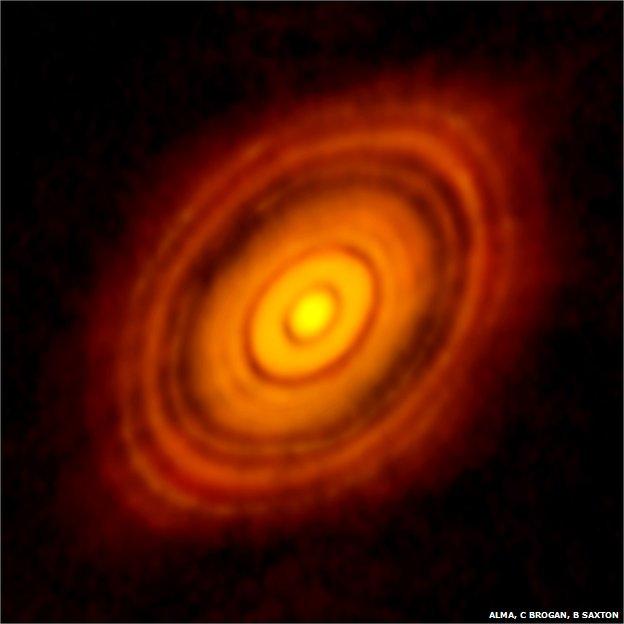
A protoplanetary disc has formed around the young star HL Tau
The clearest ever image of planets forming around an infant star has been taken by the Alma radio telescope, external.
In a vast disc of dust and gas, dark rings are clearly visible: gaps in the cloud, swept clear by brand new planets in orbit.
The sun-like star at the centre, HL Tau, is less than a million years old and is 450 light years from Earth in the constellation Taurus.
The image was made possible by Alma's new high-resolution capabilities.
Because the process of planet formation takes place in the midst of such a huge dust cloud, it can't be observed using visible light.
Alma, the Atacama Large Millimeter/submillimeter Array, has snapped the impressive new image using much longer wavelengths, which it detects by comparing the signal from multiple antennas up to 15km apart.
To test out its latest high-resolution capability, only in operation since September, Alma scientists pointed the antennas at HL Tau. They found themselves looking at a "protoplanetary disc" in more detail than ever before.
"When we first saw this image we were astounded at the spectacular level of detail," said Dr Catherine Vlahakis, a senior member of the Alma team.
"HL Tau is no more than a million years old, yet already its disc appears to be full of forming planets."
Prof Tim de Zeeuw is director general of the European Southern Observatory, one of several organisations involved in Alma. He said: "Most of what we know about planet formation today is based on theory. Images with this level of detail have up to now been relegated to computer simulations or artist's impressions."

The antennas that make up Alma are separated by up to 15km, high in Chile's Atacama Desert
Dr Aprajita Verma, an astrophysicist at the University of Oxford, said the picture was "phenomenal".
"This shows how exciting Alma is going to be - it's going to be an incredible instrument."
She said the new data was especially interesting because the star HL Tau is very young.
"I think the big result is that you might have expected just a smooth disc," Dr Verma told the BBC.
"But you're really seeing multiple rings - and where it's darker, that's where you've cleared the material already in the disc."
The whole process is happening faster than we would have predicted from existing data, Dr Verma explained.
"It means that things are coagulating. It's really a planetary system, that you're seeing at a very early time.
"These rings will form planets, asteroids, comets... And eventually as the star evolves, this will cool and settle and there will be more clearing and more individual objects, just like we see in our solar system."
Follow Jonathan on Twitter, external
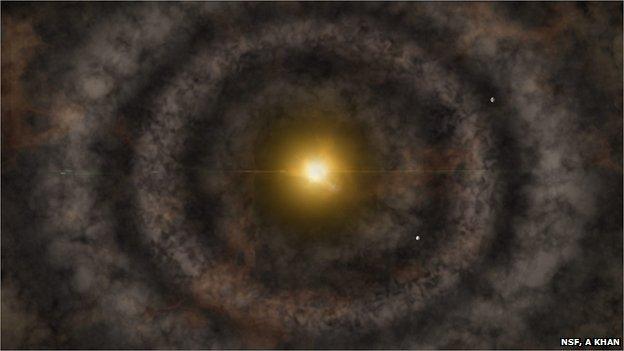
The image matches predictions from computer simulations and illustrations like this one
- Published7 January 2014
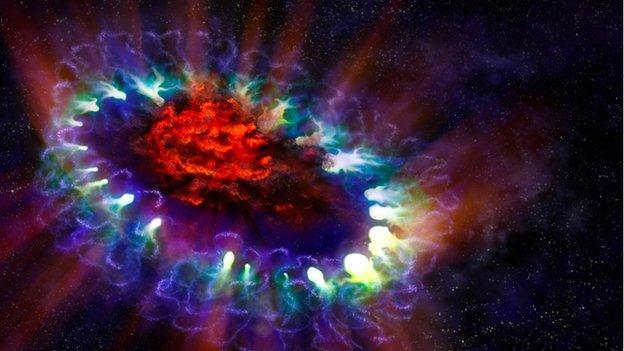
- Published11 September 2012
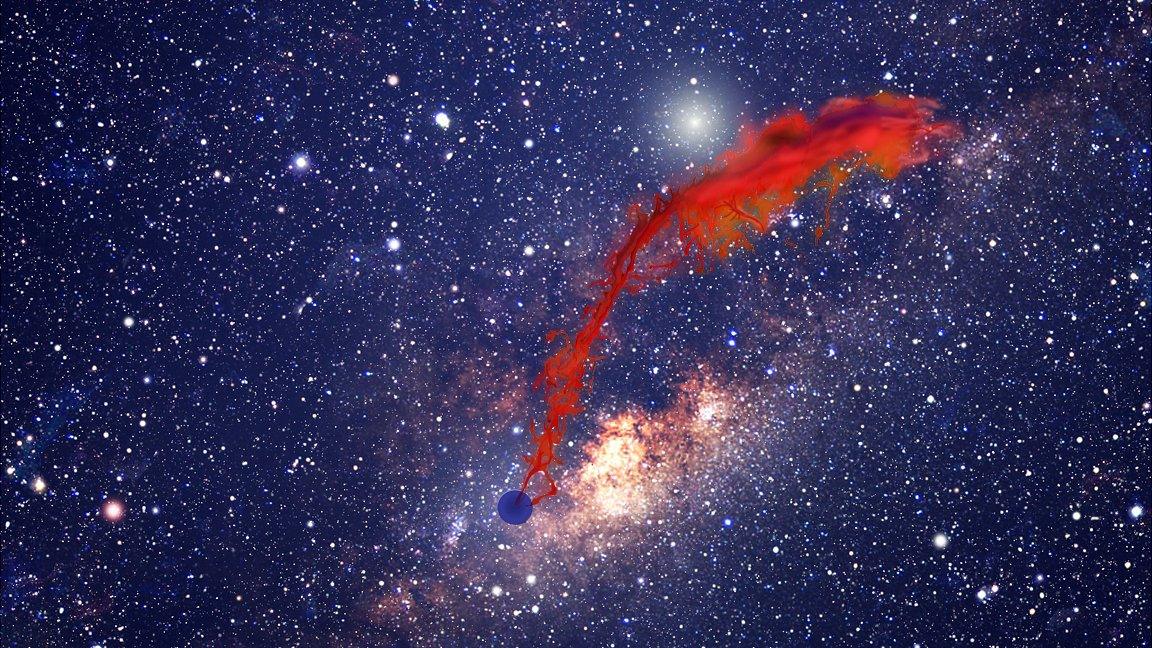
- Published3 October 2011
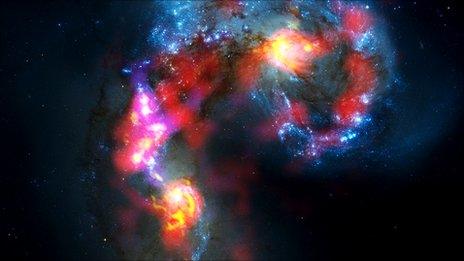
- Published2 October 2011